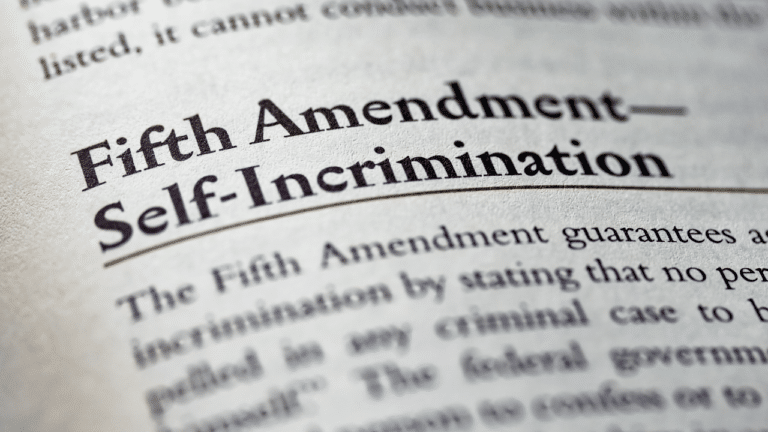The Twentieth Amendment to the Constitution of the United States reduced the transition period between presidential administrations following an election, moving the beginning and ending of the terms of president and vice president from March 4th to January 20th. The Constitutional Amendment also moved the beginning and ending of United States Congress terms from March 4th to January 3rd. Known as the Lame Duck Amendment, it effectively shortened the “lame duck” period where presidents and legislators serve out the end of their term following an election. Adopted on January 23, 1933, the Amendment also provides presidential succession contingencies in the event there is no president-elect.
What is the Twentieth Amendment in simple terms?
Under the Twentieth Amendment, a presidential term begins and ends on January 20th instead of March 4th, and congressional terms begin and end on January 3rd, instead of March 4th. Overall, this speeds the transition of power and contributes to an effective democracy.
WHAT IS THE TEXT OF THE TWENTIETH AMENDMENT TO THE UNITED STATES CONSTITUTION?
U.S. Const. Amend. XX. PRESIDENTIAL TERM AND SUCCESSION.
Section 1. The terms of the President and the Vice President shall end at noon on the 20th day of January, and the terms of Senators and Representatives at noon on the 3d day of January, of the years in which such terms would have ended if this article had not been ratified; and the terms of their successors shall then begin.
Section 2. The Congress shall assemble at least once in every year, and such meeting shall begin at noon on the 3d day of January, unless they shall by law appoint a different day.
Section 3. If, at the time fixed for the beginning of the term of the President, the President elect shall have died, the Vice President elect shall become President. If a President shall not have been chosen before the time fixed for the beginning of his term, or if the President elect shall have failed to qualify, then the Vice President shall act as President until a President shall have qualified; and the Congress may by law provide for the case wherein neither a President elect nor Vice President elect shall have qualified, declaring who shall then act as President, or the manner in which one who is to act shall be selected, and such person shall act accordingly until a President or Vice President shall have qualified.
Section 4. The Congress may by law provide for the case of the death of any of the persons from whom the House of Representatives may choose a President whenever the right of choice shall have devolved upon them, and for the case of the death of any of the persons from whom the Senate may choose a Vice President whenever the right of choice shall have devolved upon them.
Section 5. Sections 1 and 2 shall take effect on the 15th day of October following the ratification of this article.
Section 6. This article shall be inoperative unless it shall have been ratified as an amendment to the Constitution by the legislatures of three-fourths of the several States within seven years from the date of its submission.
WHAT IS THE HISTORICAL BACKGROUND OF THE TWENTIETH AMENDMENT TO THE UNITED STATES CONSTITUTION?
The United States Constitution sets the duration of terms for federal officials, including president, vice-president, and congress. For example, Article II, Section 1, Clause 1 fixed the term of United States President for 4 years. Similarly, Article I, Section 2, Clause 1 and Article I, Section 3, Clause 1 sets the terms for legislators in the United States House of Representatives and in the United States Senate, respectively. Additionally, Article I, Section 4, Clause 2 requires Congress to meet at least once a year.
However, at the time of its ratification, the Constitution provided no start or end date for these terms. Therefore, when the Congress of the Confederation (the congress under the Articles of Confederation) set March 4, 1789 as the date of commencement for the new union government, it was deemed that elected officials would also begin their terms on March 4th. As elections were held in November, there was a lengthy, four-month “lame duck” period between election and the inauguration of new officials, including the President. The impracticalities of these scheduling decisions soon became apparent as newly-elected officials had to wait four months before they could deal with pressing national issues.
The Twentieth Amendment text was thus proposed for debate to the legislatures of the several States by the Seventy-Second Congress (United States Senate and United States House of Representatives) on March 2, 1932. On January 23, 1933, in a proclamation of the Secretary of State Henry Stimson, it was declared to have been ratified by the legislatures of thirty-six of the fourty-eight States: Virginia on March 4, 1932; New York on March 11, 1932; Mississippi on March 16, 1932; Arkansas on March 17, 1932; Kentucky on March 17, 1932; New Jersey on March 21, 1932; South Carolina on March 25, 1932; Michigan on March 31, 1932; Maine on April 1, 1932; Rhode Island on April 14, 1932; Illinois on April 21, 1932; Louisiana on June 22, 1932; West Virginia on July 30, 1932; Pennsylvania on August 11, 1932; Indiana on August 15, 1932; Texas on September 7, 1932; Alabama on September 13, 1932; California on January 4, 1933; North Carolina on January 5, 1933; North Dakota on January 9, 1933; Minnesota on January 12, 1933; Arizona on January 13, 1933; Montana on January 13, 1933; Nebraska on January 13, 1933; Oklahoma on January 13, 1933; Kansas on January 16, 1933; Oregon on January 16, 1933; Delaware on January 19, 1933; Washington on January 19, 1933; Wyoming on January 19, 1933; Iowa on January 20, 1933; South Dakota on January 20, 1933; Tennessee on January 20, 1933; Idaho on January 21, 1933; New Mexico on January 21, 1933; and Missori on January 23, 1933.
Ratification of the Twentieth Amendment was complete with the ratification by the state legislature of Missori but the amendment was subsequently ratified by Georgia, Ohio, Utah, Massachusetts, Wisconsin, Colorado, Nevada, Connecticut, New Hampshire, Vermont, Maryland, and Florida between January and April of 1933. Neither Alaska nor Hawaii were states at the time of the 20th Amendment’s proposal.
WHAT ARE THE DIFFERENT CLAUSES OF THE TWENTIETH AMENDMENT TO THE UNITED STATES CONSTITUTION?
The Twentieth Amendment, known as the Lame Duck Amendment, shortened the “lame duck” period between the terms of outgoing and incoming presidential administration and congressional seats. The 20th Amendment also dealt with the schedule of congressional sessions and provided presidential succession contingencies:
Section 1 of the Twentieth Amendment to the United States Constitution provides that the start and end of a presidential term is noon on January 20th. This provision overrides language in the Twelfth Amendment referring to March 4 as the date the United States House of Representatives must have a contingent presidential election in circumstances where there is gridlock in the electoral college. Section 1 also provides that the start and end of congressional terms is noon on January 3rd. This change shortened the four-month transition period between election and assumption of office (“lame duck” period).
Section 2 of the Twentieth Amendment to the United States Constitution sets the commencement of congressional sessions on January 3 instead of the first Monday in December, as previously mandated by Article I, Section 4, Clause 2 of the Constitution.
Section 3 of the Twentieth Amendment to the United States Constitution outlines the procedures to be followed if the president-elect dies before oath of office and assuming office. The 20th Amendment states that in such a situation, the Vice President-elect shall become President. Additionally, if a President has not been chosen or if the President-elect fails to qualify prior to the date set for inauguration, the Vice President-elect shall act as President until the President qualifies. The Constitution previously provided no guidance in the event of the election of a constitutionally unqualified person as president. Congress is also empowered to pass laws addressing scenarios where neither a President-elect nor a Vice-President elect has qualified, specifying who is to act as President until a qualified individual assumes office. Congress subsequently passed the Presidential Succession Act of 1947 to address “failure to qualify” as a condition for presidential succession.
Section 4 of the Twentieth Amendment of the United States Constitution allows Congress to legislatively address scenarios for contingencies where the House must elect a president, and their candidate dies or when the Senate must elect a vice president, and their candidate dies. Congress has never passed such a statute.
Sections 5 and 6 directly deal with logistics and procedures for ratification and enactment of the 20th Amendment.
TWENTIETH AMENDMENT TO THE UNITED STATES CONSTITUTION
The Twentieth Amendment to the Constitution of the United States was ratified on January 23, 1933 and primarily addresses the timing of the terms of office for president, vice-president, and members of congress. It is known as the Lame Duck Amendment as it sought to reduce the “lame duck” period between elections and the assumption of office. The 20th Amendment thus specified that presidential and vice presidential terms would begin at noon on January 20th, and congressional terms would begin on January 3 following the election. Prior to the 20th Amendment, these terms began on March 4th, nearly four months after election day. The Constitutional Amendment also provides contingencies in case there was no president-elect or if the president-elect were to be deceased prior to taking oath of office and beginning the term.
TWENTIETH AMENDMENT COURT CASES
The United States Supreme Court has not extensively interpreted and applied the Twentieth Amendment since its adoption in 1933. However there have been cases related to aspects of interpretation and application of certain distinct 20th Amendment provisions by the judiciary:
- In Dillon v. Gloss, the Supreme Court of the United States addressed whether the United States Congress could lawfully impose a timeline for ratification of a constitutional amendment, as it had done with the Eighteenth Amendment. The Court ruled that congress could lawfully fix a definite period for ratification as congress again did when proposing the 20th Amendment text to the states.
- In United States v. Ballin, the Supreme Court of the United States upheld the ability of Congress to determine its own rules and procedure, in this case involving quorum. The case reflects on Congress’ ability to determine the timing and scheduling of congressional sessions as set forth in the 20th Amendment text.












